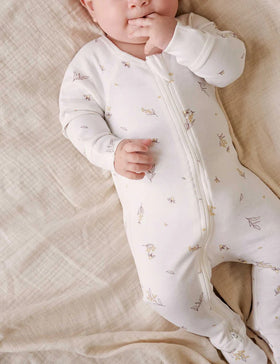
Creating an Eco-Friendly Nursery: Tips for Designing a Sustainable and Safe Space for Your Baby
Welcoming a new baby into your home is an exciting and joyful time, and designing a beautiful nursery is an essential part of the process. In recent years, the concept of an eco-friendly nursery featuring organic, non-toxic materials has gained popularity among parents who want to create a safe and healthy environment for their little ones while also minimizing their impact on the environment. In this blog, we will share tips on designing a sustainable and safe space for your baby, focusing on sustainable materials, energy-efficient solutions, and eco-conscious habits.
Choosing Sustainable Materials: Furniture, Flooring, and Paint
When designing an eco-friendly nursery, choosing sustainable materials for furniture, flooring, and paint is essential. Opt for furniture made from sustainably sourced wood, such as FSC-certified products, which ensures responsible forest management. Avoid furniture made from particleboard or MDF, as these materials often contain formaldehyde, a harmful chemical that can off-gas into the nursery air.
For flooring, consider options such as bamboo, cork, or sustainably harvested hardwood, which are eco-friendly, durable, and easy to maintain. If you prefer carpet, opt for natural materials like organic wool or cotton, and look for low-VOC (volatile organic compounds) adhesives and padding.
Regarding paint, choose low-VOC or zero-VOC options, which emit fewer harmful chemicals into the air. Many brands now offer eco-friendly paint lines that are water-based, non-toxic, and made with natural pigments.
Energy-Efficient Lighting, Nursery Decor, and Storage Solutions
Incorporating energy-efficient lighting in your nursery is another way to reduce your environmental impact. Opt for LED bulbs, which use less energy and last longer than traditional incandescent bulbs. You can also install dimmer switches to control the intensity of the light and save energy.
When selecting nursery decor, choose items made from natural, organic materials, such as organic cotton curtains, bamboo wall art, and non-toxic, eco-friendly wall decals. It's advisable to steer clear of items manufactured from plastic or synthetic materials as they can potentially emit harmful chemicals into the atmosphere.
For storage solutions, consider using eco-friendly materials like bamboo or reclaimed wood for shelves and bookcases. You can also repurpose existing furniture, such as an old dresser or armoire, to create a changing table or storage unit, reducing waste and promoting sustainability.
Non-Toxic Materials for Bedsheets, Cushions, and Mattresses
Your little one will be spending a considerable amount of time sleeping in their nursery, so choosing non-toxic materials for bedsheets, cushions, and mattresses is crucial. Opt for organic cotton, bamboo, or linen bedding free from harmful chemicals and pesticides. Look for mattresses made from natural materials like organic latex or wool, and avoid those made with synthetic foam or treated with chemical flame retardants.
Second-Hand and Upcycled Items: Reducing Waste and Promoting Sustainability
One of the most effective ways to create an eco-friendly nursery is to incorporate second-hand or upcycled items. By purchasing used furniture, toys, and decor, you can reduce waste and save money while creating a beautiful and functional space for your baby. Visit local thrift stores, consignment shops, or online marketplaces to find gently used items that can be repurposed or updated with a fresh coat of eco-friendly paint.
Incorporating Nature-Inspired Elements and Eco-Conscious Habits
Finally, consider incorporating nature-inspired elements and eco-conscious habits into your nursery design. This can include using plants to purify the air, creating a nature-themed mural or gallery wall, or incorporating natural materials like wood, stone, or rattan in your decor. Encourage sustainable habits by using cloth diapers, reusable wipes, and eco-friendly cleaning products in your nursery routine.
Conclusion: An Eco-Friendly Nursery for a Healthy Baby and Environment
Creating a nursery that uses organic and non-toxic materials promotes a safe and healthy environment for your baby, encourages sustainable living, and helps reduce your carbon footprint. You can create a beautiful, nurturing space that benefits your baby and the planet by choosing sustainable materials, incorporating energy-efficient solutions, and adopting eco-conscious habits. So, start planning your eco-friendly nursery today and take the first step towards a greener future for your little one.


